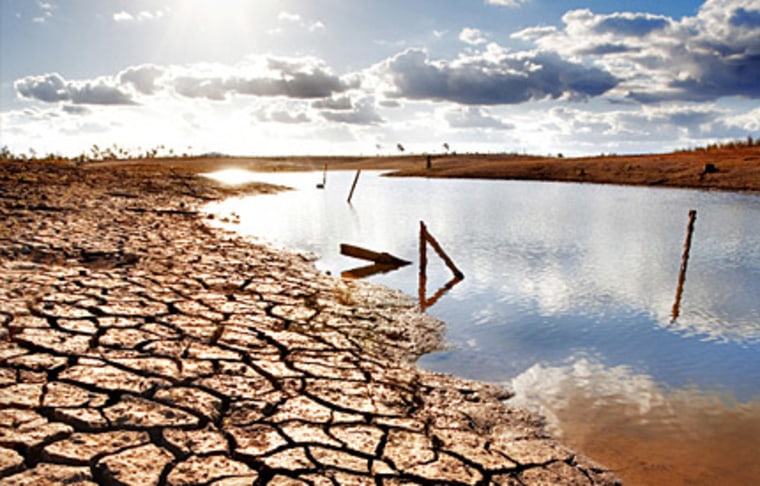New membrane technologies could more efficiently turn billions of gallons of seawater full of salt, decomposed fish, and other bits of unappetizing organic matter into thirst-quenching liquid for people and crops, according to experts in desalination technology.
The problem is that these membrane technologies don't yet exist in the right form to efficiently turn seawater into freshwater, they said in a review article aimed at spurring lab-level research with molecular models.
Desalination plants use membranes in a process called reverse osmosis. Seawater is forced through the membrane to filter out the salt in seawater to help make it drinkable and available for irrigation. The process requires a minimum amount of energy to do.
"If you have a clean room, it gets messier and messier over time and in order to sort that you, you've got to expend energy to clean your room up. Separating salt water from seawater is kind of the same thing," William Phillip, a chemical engineer at the University of Notre Dame, told me on Monday.
Membrane tech
Advances in membrane technology, such as using novel materials such as carbon nanotubes to reduce the amount of energy required to push the water through it, are allowing researchers to approach this theoretical limit in energy expenditure.
This means that desalination remains an energy-intensive process that is much less efficient than the technologies used to make freshwater available for drinking as well as the cost savings gained through water conservation, reuse and recycling, the researchers note.
But separating salt water from seawater is only part of the equation in the desalination process. While membranes are close to the minimum limit of energy required, desalination plants spend up to twice as much energy in pre- and post-treatment processes.
For example, plants need to filter out decomposing fish and seaweed as well as other forms of particulate and organic matter before it is passed through the membrane. Chemicals such as boron and chloride are filtered out after the membrane pass to make the water suitable for agriculture.
"Finding ways to not use as much energy to pre-treat the water is somewhere we think that science and technology can help," said Phillip, who wrote the paper with Menachem Elimelech, while he was a post-doctoral student at Yale University.
Their idea is to develop membranes that filter out all the other stuff as well as salt from the seawater, but do so in a way that the membranes don’t get gunked up with fish scales and seaweed and thus require constant cleaning.
"If you can make a membrane that stuff didn't stick to, or didn’t adhere to the membrane surface as easily, then you could relax pretreatment demands and use less energy," Phillip explained.
While this so-called anti-fouling technology doesn't yet exist for desalination, these surfaces have been created for other uses such as medical implants, noted Phillip. A membrane, however, has to let freshwater pass through while blocking all the other stuff, but not allowing it to stick.
That's a tall order, but one that the researchers, writing in the Aug. 5 issue of Science, said they can begin to tackle with "detailed molecular models that establish structure-property relationships between membrane surface structure and chemistry."
Appropriate use
A breakthrough with an anti-fouling membrane fitted into commercial-scale desalination plants is at a minimum on the order of five to 10 years out, Phillip said, but developing the technology within that time frame could make improved desalination technology available for when and where it is needed.
Freshwater is an increasingly scarce resource on a planet with a surging population, emerging industrial economies and a changing climate, the researchers note. In some parts of the world such as Israel, Singapore and Spain, desalination is the "only viable means to provide the water supply necessary," they write.
This is true even though desalination requires three times more energy than conventional methods to treat river water, lakes, and groundwater for potable use, Elimelech noted in an email exchange with me.
In addition, environmental concerns such as trapping juvenile fish during intake and discharging highly concentrated saltwater mixed with chemicals into the marine environment must also be considered, the authors note in their review paper.
Elimelech added: "If you still want to have desalination as part of the water supply portfolio, we need to continue to improve the energy efficiency to make it a sustainable technology. At the present time, the bottom line — if you have other less energy/cost consuming options, use them first."
More on desalination:
- Green machine takes root in Jordan
- Dry California OKs huge desalination plant
- Desalination has promise, experts say
- Israel to build 5th desalination plant
John Roach is a contributing writer for msnbc.com.
